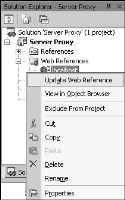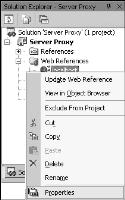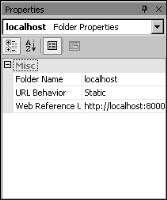About the Microsoft .NET client
BIRT iHub System contains WSDL documents that define the Actuate web services schema for the Microsoft C# and Visual Basic development environments. The Microsoft .NET client provides a web services framework for building applications that communicate with BIRT iHub System, using SOAP messaging.
The Actuate Information Delivery API framework uses elements of the Microsoft .NET development platform to support the following features:

Automatic generation of the Actuate Information Delivery API code library from an Actuate WSDL document
The library contains the classes, including server proxies, that you can use to write an Actuate Information Delivery API application.

A SOAP processor that provides automatic encoding and decoding of SOAP messages
A Microsoft .NET client solution containing example projects ships with BIRT iHub Integration Technology. The Microsoft .NET client is in the following directory:
ACTUATE_HOME\ServerIntTech\Web Services\Examples\MS .NET Client
The Microsoft .NET Client directory contains the following subdirectories:

Source
Contains the example projects.

Report
Contains the report files used by the example projects.

Download
Stores the files or reports downloaded by the example projects. This directory is initially empty.

Build
After building an example project, there are two subdirectories in the build directory, debug and release. Each directory contains copies of the executable files for the project.
There are two solution description files in the MS .NET Client root directory:

Server Proxy.sln
Open the server proxy solution first, then build it to generate the proxy DLL. The build process puts the Server Proxy.dll and Server Proxy.pdb files in a build directory for other projects to share and reference.

Examples.sln
After you build the server proxy, open the examples solution and build it to compile the example projects. Copy the server proxy files, Server Proxy.dll and Server Proxy.pdb, to the /Debug and /Release subfolders of the example projects.
If changes occur in the WSDL interface, download the latest WSDL file from the BIRT iHub and replace the ActuateAPI.wsdl file in the server proxy solution at the following location:
ACTUATE_HOME\ServerIntTech\Web Services\Examples\MS .NET Client
\source\Server Proxy\Web References\localhost
Rebuild the proxy, then rebuild all the examples. To update the WSDL file using the Microsoft .NET development tool, perform the following tasks:
1 In Solution Explorer, expand Web References.
2 Select localhost, right-click, then choose Update Web Reference, as shown in
Figure 21‑1.
Figure 21‑1 Updating the web reference for localhost
This procedure updates the local copy of the WSDL file from an BIRT iHub configured to run at the following default location:
http://localhost:8000/wsdl/v11/net/all
If you are using a BIRT iHub that listens at a different port on the local machine, change the URL property for the Web Reference, localhost. To update the URL property for the existing Web Reference, localhost, perform the following tasks:
1 In Solution Explorer, expand Web References.
2 Select localhost, right-click, then choose Properties, as shown in
Figure 21‑2.
Figure 21‑2 Changing the web reference for localhost
Figure 21‑3 The Properties page for localhost
3 Change the Web Reference URL for localhost to the correct value.
Alternatively, you can delete the Web Reference, localhost, then add a new Web Reference that contains the correct URL property.
The ACTUATE_HOME\ServerIntTech\Web Services\Examples\MS .NET Client
\source\Server Proxy\Web References\localhost directory also contains the following files:

Reference.cs
Contains the Actuate Information Delivery API classes generated from the Actuate WSDL document

Reference.map
Contains the following references:

Namespace declaration, xsd, used as a prefix for every Actuate Information Delivery API SOAP message to determine the scope of the XML namespace. The following namespace declaration indicates that a message is based on the World Wide Web Consortium XML schema initially published in 2001:
xmlns:xsd="http://www.w3.org/2001/XMLSchema"

Specific instance of the XML schema. In order to use namespace attribute types in an XML document, you must define the xsi namespace, as shown in the following example:
xmlns:xsi="http://www.w3.org/2001/XMLSchema-instance"

Web services system. The following reference specifies the ActuateAPI.wsdl document for Actuate 11:
url="http://localhost:8000/wsdl/v11/net/all" filename="ActuateAPI.wsdl"
The following sections describe how to build client applications that use the libraries provided by the Actuate Information Delivery API for development in a Microsoft .NET environment.


